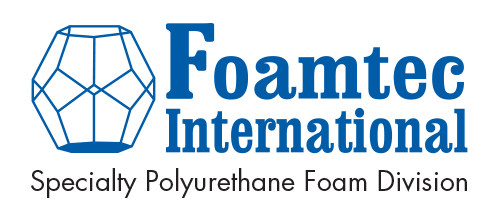Flexible Polyurethane Foam Design Considerations and Materials for Vibration Control
Managing vibrations is crucial to ensure the equipment's longevity, performance, and safety. Vibration control entails mitigating unwanted oscillations and oscillatory movements in equipment and structures. Uncontrolled vibrations can lead to premature wear, reduced product quality, and safety hazards. Flexible polyurethane foam presents an innovative approach to addressing these challenges, offering customizable solutions for diverse industrial applications.
Applications:
Vibration control is critical in various applications, including the following:
1. Heavy Machinery: Industries with heavy machinery, such as manufacturing and construction, benefit from custom foam solutions to dampen vibrations, reduce wear, and enhance equipment performance.
2. Transportation: Automotive, aerospace, and maritime industries use foam to isolate vibrations in vehicles and vessels, improving passenger comfort and preventing equipment damage.
3. Precision Instruments: In sectors like healthcare and electronics manufacturing, foam solutions help maintain the accuracy of delicate instruments by isolating vibrations that could affect measurements and performance.
4. Energy Generation: Power plants and energy facilities deploy foam to dampen vibrations in generators, turbines, and cooling systems, ensuring stable operation and reducing maintenance costs.
Design Considerations:
1. Different equipment and processes generate vibrations at varying frequencies. Understanding the vibration spectrum is essential for selecting the appropriate foam material and design to dampen vibrations effectively.
2. The shape, size, and equipment layout determine how vibrations are transmitted. Custom foam solutions should be designed to fit snugly and cover critical vibration pathways.
3. Consider how the foam will distribute loads and forces when it comes into contact with the equipment. Proper load distribution ensures efficient vibration absorption and reduces localized stress.
4. Industrial environments can be harsh, with exposure to temperature fluctuations, chemicals, and mechanical stress. Choose durable foam materials that can withstand these conditions while maintaining their vibration-dampening properties.
5. Evaluate the potential for resonance, the depth of the sound, which can amplify vibrations. Foam solutions can be tailored to dampen resonance frequencies, preventing equipment damage and instability.
Properties of polyurethane foam related to vibration control:
1. Density: Polyurethane foam density plays a significant role in vibration control. Higher-density foams offer better energy absorption and vibration-damping capabilities, making them suitable for heavy machinery and equipment.
2. Compression set: Foam with low compression set resistance maintains its shape and properties over time, ensuring consistent vibration control performance even after prolonged use.
3. Open cell structure: Foam's cell structure impacts its ability to compress and absorb vibrations. Open-cell foams are often used for vibration control because they deform and conform to surfaces.
4. Operating temperature range: In environments with temperature fluctuations, choose foam materials that retain their properties within the operating temperature range to ensure consistent vibration control.
Foamtec International can assist in choosing the correct polyurethane foams to meet the performance characteristics required. In many cases, this involves our engineering team cooperating with our valued customers to design a special foam to meet specific criteria.

